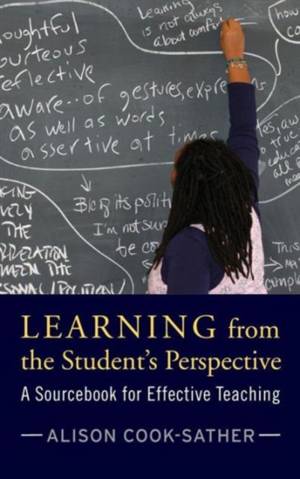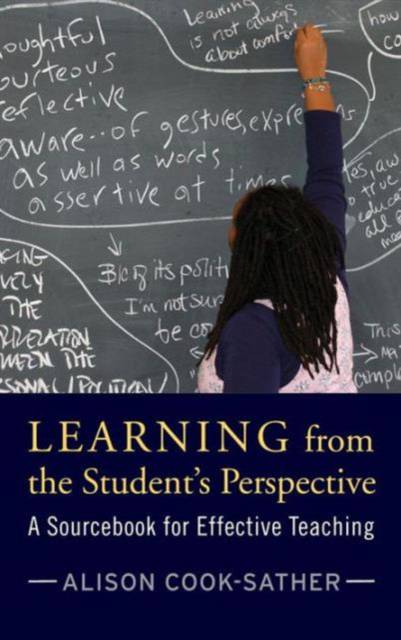
- Retrait gratuit dans votre magasin Club
- 7.000.000 titres dans notre catalogue
- Payer en toute sécurité
- Toujours un magasin près de chez vous
- Retrait gratuit dans votre magasin Club
- 7.000.0000 titres dans notre catalogue
- Payer en toute sécurité
- Toujours un magasin près de chez vous
Learning from the Student's Perspective
A Sourcebook for Effective Teaching
Alison Cook-Sather, Brandon Clarke, Daniel Condon, Kathleen Cushman, Helen Demetriou, Lois Easton
Livre relié | Anglais
305,45 €
+ 610 points
Format
Description
Much has been written about how to engage students in their learning, but very little of it has issued from students themselves. Compiled by one of the leading scholars in the field of student voice, this sourcebook draws on the perspectives of secondary students in the United States, England, Canada, and Australia as well as on the work of teachers, researchers, and teacher educators who have collaborated with a wide variety of students.Highlighting student voices, it features five chapters focused on student perspectives, articulated in their own words, regarding specific approaches to creating and maintaining a positive classroom environment and designing engaging lessons and on more general issues of respect and responsibility in the classroom. To support educators in developing strategies for accessing and responding to student voices in their own classrooms, the book provides detailed guidelines created by educational researchers for gathering and acting upon student perspectives. To illustrate how these approaches work in practice, the book includes stories of how pre-service and in-service teachers, school leaders, and teacher educators have made student voices and participation central to their classroom and school practices. And finally, addressing both practical and theoretical questions, the book includes a chapter that outlines action steps for high school teachers, school leaders, and teacher educators and a chapter that offers a conceptual framework for thinking about and engaging in this work. Bringing together in a single text student perspectives, descriptions of successful efforts to access them in secondary education contexts, concrete advice for practitioners, and a theoretical framework for further exploration, this sourcebook can be used to guide practice and support re-imagining education in secondary schools of all kinds, and the principles can be adapted for other educational contexts.
Spécifications
Parties prenantes
- Auteur(s) :
- Editeur:
Contenu
- Nombre de pages :
- 270
- Langue:
- Anglais
Caractéristiques
- EAN:
- 9781594516931
- Date de parution :
- 20-04-10
- Format:
- Livre relié
- Format numérique:
- Ongenaaid / garenloos gebonden
- Dimensions :
- 155 mm x 231 mm
- Poids :
- 498 g

Les avis
Nous publions uniquement les avis qui respectent les conditions requises. Consultez nos conditions pour les avis.






